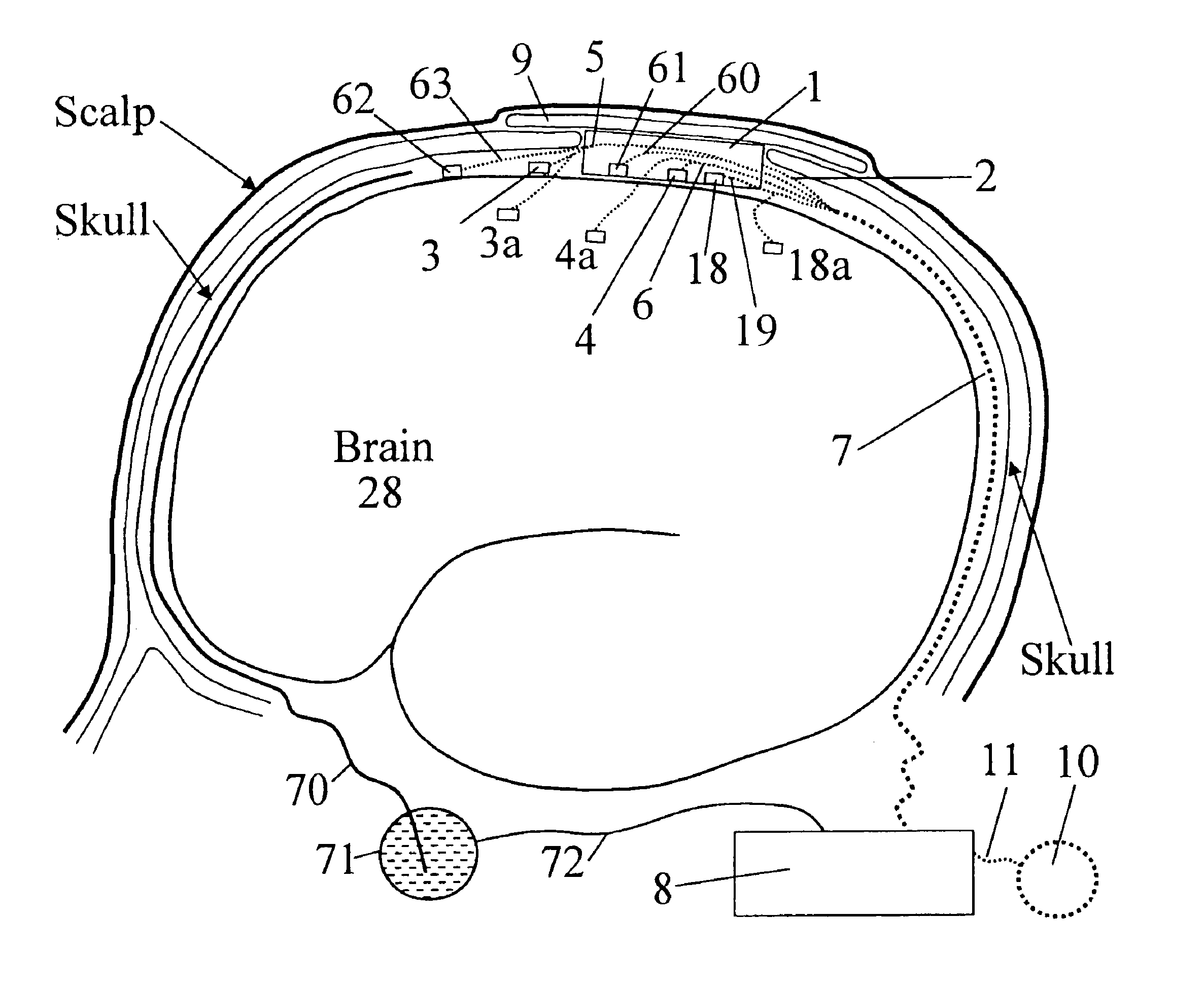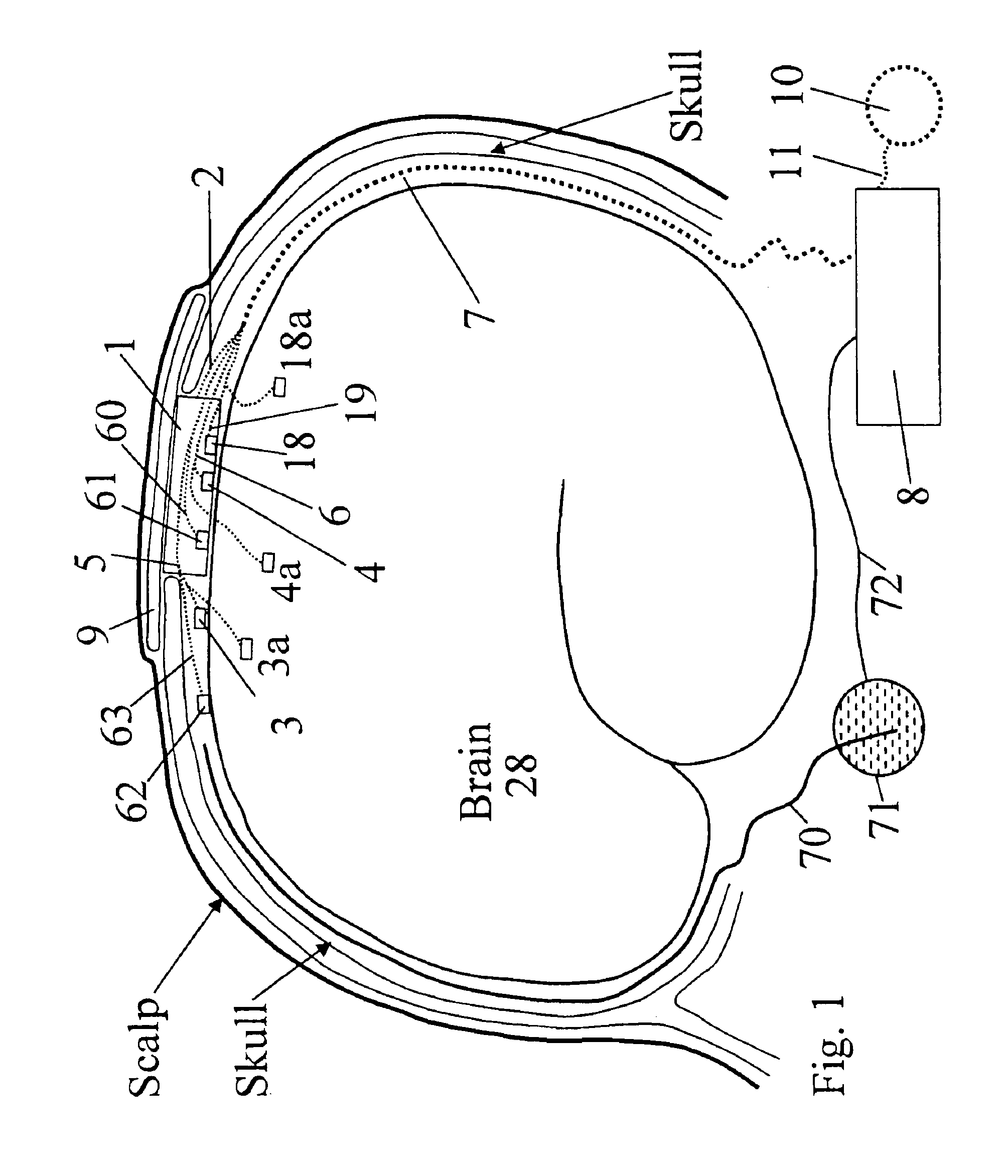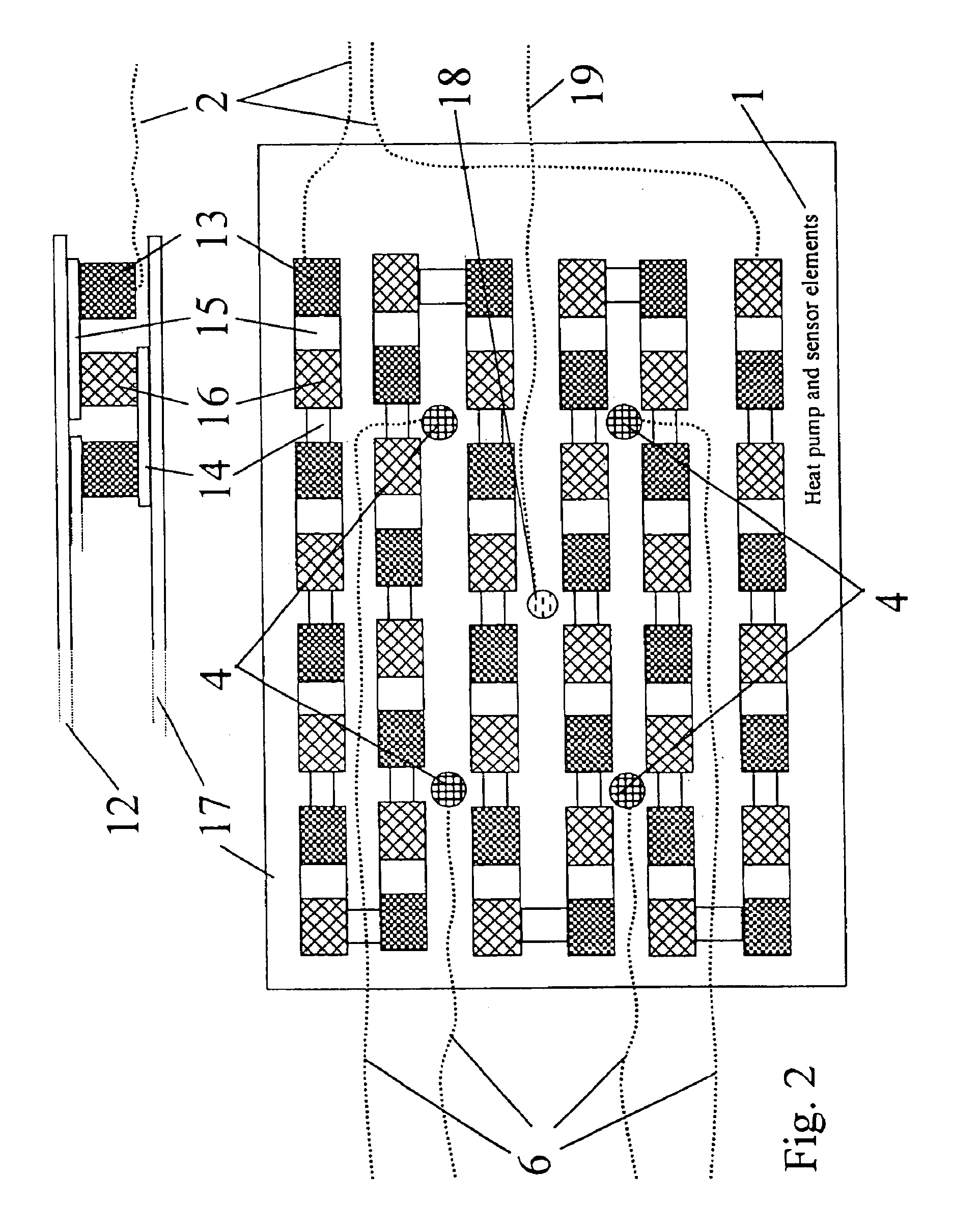Techniques using heat flow management, stimulation, and signal analysis to treat medical disorders
a technology of heat flow management and signal analysis, applied in the field of medical disorders, can solve the problems of rarely controlling seizures completely, significant health problems, and significant epilepsy, and achieve the effect of maintaining charge balan
- Summary
- Abstract
- Description
- Claims
- Application Information
AI Technical Summary
Benefits of technology
Problems solved by technology
Method used
Image
Examples
example 1
[0086]Afterdischarges and the effect of brief pulse stimulation (BPS) on afterdischarges (ADs) were studied. No single, typical form of ADs was noted. Such pulse stimulation occurs for clinical reasons, in order to help localize areas of brain controlling movement, sensation, language, and other functions, but may produce activity of epileptiform morphology called afterdischarges. Such afterdischarges can be taken as a model of epilepsy. Effect of BPS was not dependent upon pretreatment with anticonvulsant medication, relative time of ADs, or treatment latency. In addition, BPS was effective in all lobes stimulated, for all types of ADs, and both in regions that did and did not produce interictal epileptiform discharges; however, degree of effectiveness depended on these variables. For example, BPS was most effective anteriorly and least effective posteriorly. BPS were more likely to stop ADs if ADs consisted of continuous rhythmic epileptiform activity than to stop ADs that were ra...
example 2
[0088]The value of wavelet cross-correlation analysis was assessed in 57 events in which afterdischarges (ADs) appeared in response to stimulation of brain cortical tissue in humans. Mean durations of epoch 1, 2 and 3 were 9.9, 11.3 and 14.5 seconds, respectively. For controls in analysis-2 we chose 59 events in which ADs did not appear after cortical stimulation. Significant differences of WCC values tended to occur between epochs 1 and 2, and 2 and 3. On the other hand, there were few significant differences in WCC between epochs 1 and 3.
[0089]The results suggested that activity propagated from one electrode to another with a time lag. Short time lags (less than 10 milliseconds) occurred less frequently during epoch 2, but that time lags of 10 milliseconds occurred more frequently during epoch 2.
[0090]In summary, results indicated that there were significant differences in WCC and TL when comparing among different epochs. These differences can be utilized to determine when seizure...
example 3
[0091]The effects of cooling neural tissue on seizure development were investigated using an EAAC1 knockout rat model of epilepsy. EACC1 antisense DNA was continuously infused into left ventricle of a test animal for 10 days using a pump located on animal's back. Diffuse glutamate toxicity was thereby effected in brain of knockout rat. Diffuse glutamate activity produced seizures, manifested by activity arrest, staring, and rhythmic 2-3 / sec epileptiform EEG patterns, all indicative of seizure activity. Thereafter, test animal was anesthetized and a cooling unit adhered to rat's head. Due to thinness of rat crania, cooling of brain was achieved through intact rat skull. EEG tracings were made at baseline (28.8° C.) and at hypothermic (25.2° C.) temperatures. An overall reduction in seizure activity was observed after cooling, marked by return of normal exploratory behavior and normal EEG tracings.
PUM
 Login to View More
Login to View More Abstract
Description
Claims
Application Information
 Login to View More
Login to View More - R&D
- Intellectual Property
- Life Sciences
- Materials
- Tech Scout
- Unparalleled Data Quality
- Higher Quality Content
- 60% Fewer Hallucinations
Browse by: Latest US Patents, China's latest patents, Technical Efficacy Thesaurus, Application Domain, Technology Topic, Popular Technical Reports.
© 2025 PatSnap. All rights reserved.Legal|Privacy policy|Modern Slavery Act Transparency Statement|Sitemap|About US| Contact US: help@patsnap.com



